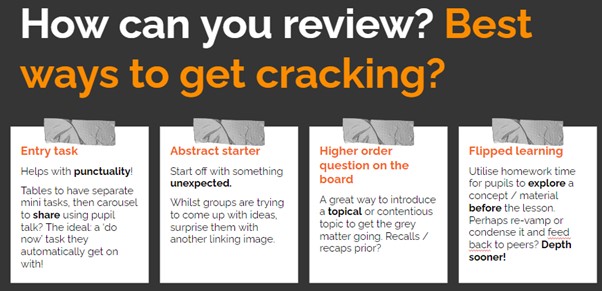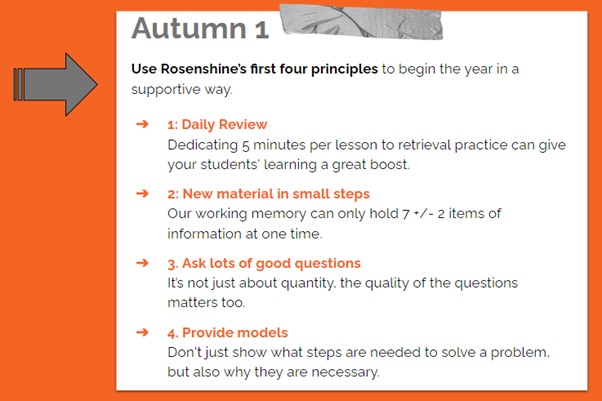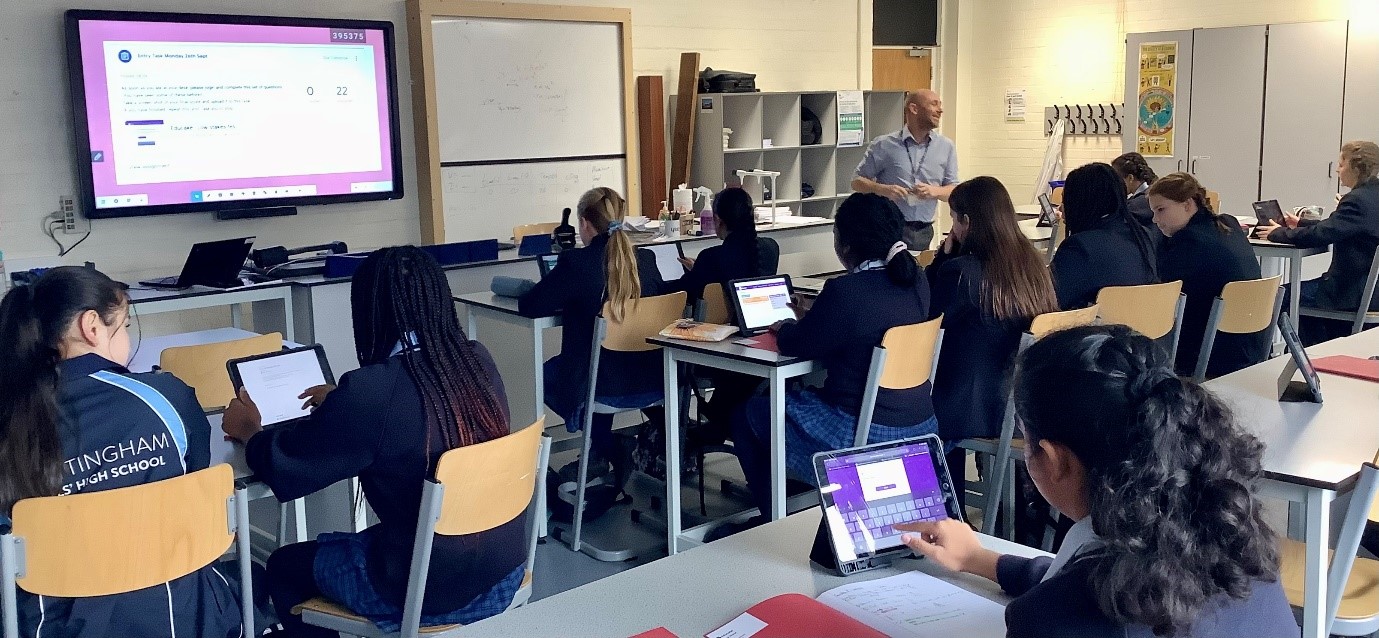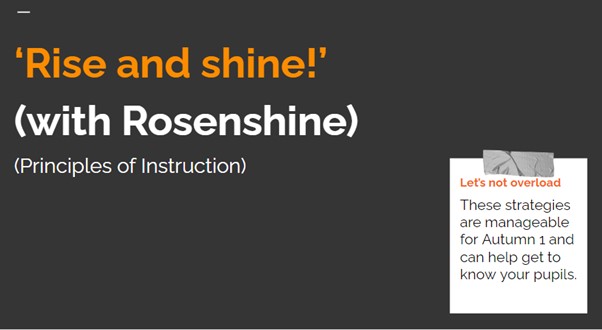Start as we mean to go on
James Brown, Assistant Head for Teaching and Learning, outlines this year’s approach to get the best out of lessons.
Like a jolly good book, there is a way to ‘hook’ and draw you in. And the same goes for lessons; if they’re dull, slow to start or too predictable, you’ve lost your learners before they’ve even begun. From then, it can be uphill struggle. We want to support learners in steps and stages, not drag them to the finish line!
Start with something engaging and you can go even further – achieving greater depth, lesson on lesson, which adds impetus and allows for understanding far beyond a race to cover content. It allows for more opportunity to ask questions, delve deeply into topics, make links and pause, knowing when to recap and perhaps deciding to take a different approach.
Whatever age, Junior or Senior, students appreciate the thought that goes into making lessons interesting. This creativity gives our teachers a buzz, too. Our job is to spark interest and ensure, ultimately, that they can all work things out using knowledge and skill in formulating answers, arguments and responses assuredly.
As part of our recent whole-school INSET training, we are continuing, along with Lesson Study and other action research, a focus on ensuring that we begin lessons with a ‘bang’. Here are some of the ways suggested:

This follows Rosenshine’s 10 Principles of Instruction. An educational psychologist and expert in theory and practice, Rosenshine advocated that delivery is all-important for learning. Decades of research allowed him to develop a deep understanding of effective implementation of classroom strategies, supporting how to encourage students to remember ‘new material’, along with how much support teachers should give.

Already, in popping into lessons, we have seen varying and engaging approaches in action. Utilising technology, with having 1:1 iPads, we can ‘Schedule’ tasks for to engage students straight away on Google Classroom.

In Physics, for example, eChalk is used at KS3 to crack on with quizzes then upload the best score for the teacher to see, along with utilising Educake, an award-winning online homework and revision platform which allows teachers to set entry tasks on previous and current learning to spark students’ interest and interleave topics for consolidation, just as we do for exam classes.

Also, in Year 11 GCSE Chemistry, students are revising Year 10 topics (such as organic chemistry) as entry tasks, linking in to interleaving so that retrieval and revision for the linear assessment of examinations is kept up: we help facilitate revision in lessons.

These learning walks only form part of our Quality Assurance. We use student voice, in chatting to students and asking them how they best learn, and we adapt our approaches accordingly. What’s fantastic about this school is how you can ‘take a risk’ and try things out – it’s a safe space for all learners (teachers included) to have a go at different approaches and ask lots of questions. The use of technology supports this, for all learners, and is great for recapping.
Whatever a student’s individual aims or target grades, we want to see sophisticated study skill for their age; we want to see them actively engaged and involved in lessons, challenging ideas and formulating deep understanding. As well as higher order questions from teachers, we want to see that from students too as they navigate debate and argue and reason logically. These Rosenshine strategies prompt creative and solution-focused thinking. For Autumn 1 we have chosen to concentrate on the first four: 1) Daily Review; 2) New material in small steps; 3) Asking lots of ‘good’ questions; and 4) Providing models.
If students don’t know what they’re aiming for, they’re never going to hit any target. Style models, exemplar and challenging, quality examples are all-important. It’s our job to ensure that the steps and stages are clearly signposted, that key words are highlighted and that they know where they are going.
In Y10 GCSE Music, for example, to consolidate ‘textures’ terminology (monophonic, homophonic, contrapuntal or polyphonic), students were given various ‘abstract’ visuals as an aide-mémoire for each. Students used ribbon to show octaves, watched James Blunt crowd-surfing as an analogy for melody and accompaniment along with discussion on how melodies are mixed in Baroque like a spaghetti dish. It’s good to mix things up a bit because it makes it memorable.
Rosenshine’s principles encourage instruction thorough quality questioning and a ‘chunked’ approach – but it is something that is already characteristic of what we do here.
We allow both students and teachers to ‘shine’.